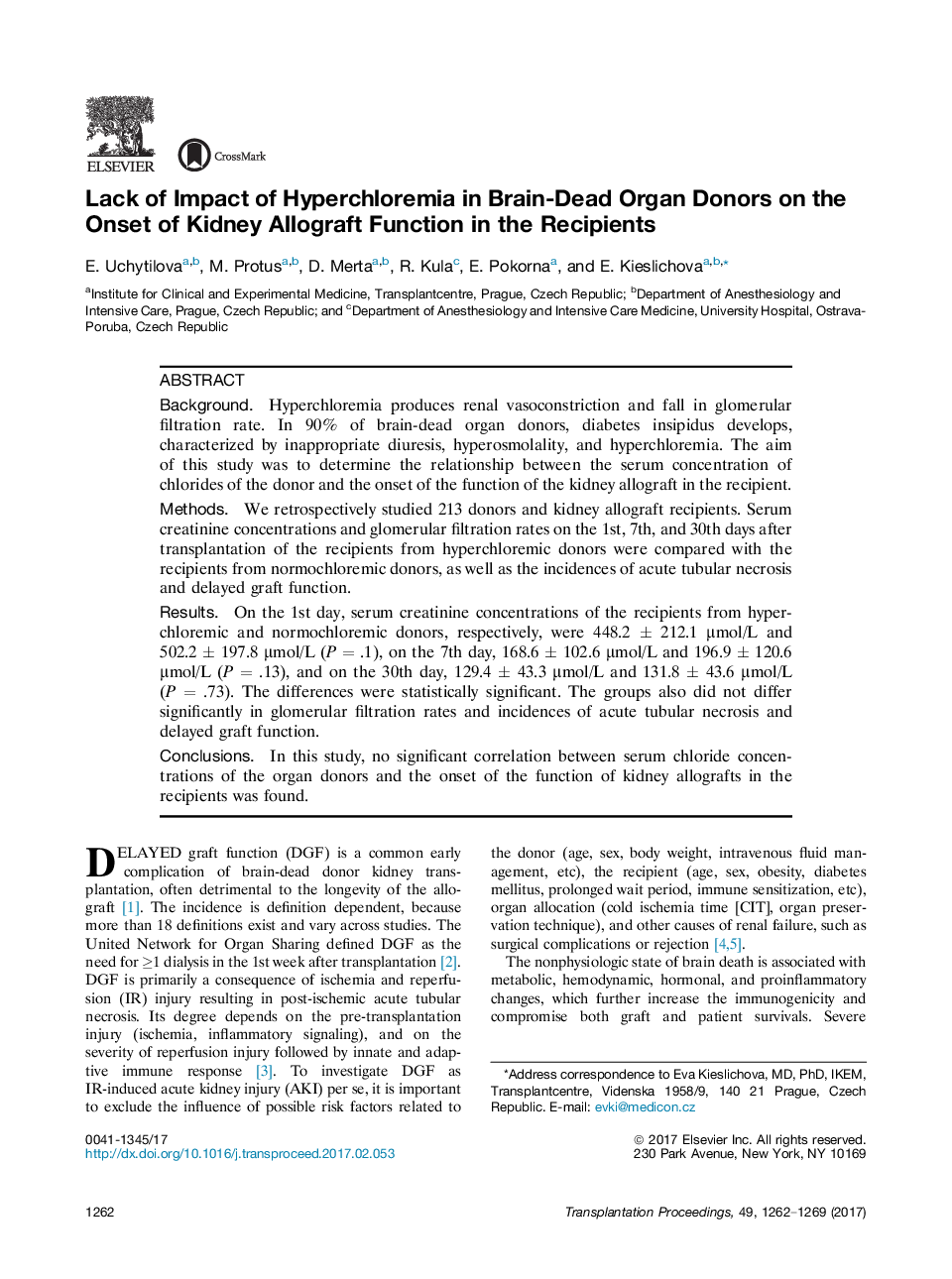| کد مقاله | کد نشریه | سال انتشار | مقاله انگلیسی | نسخه تمام متن |
|---|---|---|---|---|
| 5728678 | 1411669 | 2017 | 8 صفحه PDF | دانلود رایگان |

- Hyperchloremia is present in 90% of brain-dead organ donors.
- It has been shown that the rise in serum chlorides, primarily caused by administration of chloride-rich IV fluids, causes renal vasoconstriction and a decrease in the glomerular filtration rate.
- Kidney transplant recipients are especially susceptible owing to their failing kidneys' reduced capacity to adapt to hyperchloremia.
- Surprisingly, in this study no significant correlation between serum chloride concentrations of organ donors and the onset of kidney allograft function of the recipients was found.
BackgroundHyperchloremia produces renal vasoconstriction and fall in glomerular filtration rate. In 90% of brain-dead organ donors, diabetes insipidus develops, characterized by inappropriate diuresis, hyperosmolality, and hyperchloremia. The aim of this study was to determine the relationship between the serum concentration of chlorides of the donor and the onset of the function of the kidney allograft in the recipient.MethodsWe retrospectively studied 213 donors and kidney allograft recipients. Serum creatinine concentrations and glomerular filtration rates on the 1st, 7th, and 30th days after transplantation of the recipients from hyperchloremic donors were compared with the recipients from normochloremic donors, as well as the incidences of acute tubular necrosis and delayed graft function.ResultsOn the 1st day, serum creatinine concentrations of the recipients from hyperchloremic and normochloremic donors, respectively, were 448.2 ± 212.1 μmol/L and 502.2 ± 197.8 μmol/L (P = .1), on the 7th day, 168.6 ± 102.6 μmol/L and 196.9 ± 120.6 μmol/L (P = .13), and on the 30th day, 129.4 ± 43.3 μmol/L and 131.8 ± 43.6 μmol/L (P = .73). The differences were statistically significant. The groups also did not differ significantly in glomerular filtration rates and incidences of acute tubular necrosis and delayed graft function.ConclusionsIn this study, no significant correlation between serum chloride concentrations of the organ donors and the onset of the function of kidney allografts in the recipients was found.
Journal: Transplantation Proceedings - Volume 49, Issue 6, JulyâAugust 2017, Pages 1262-1269